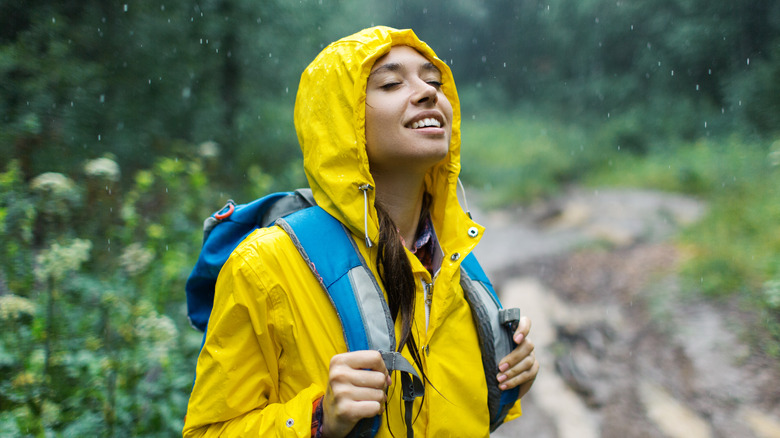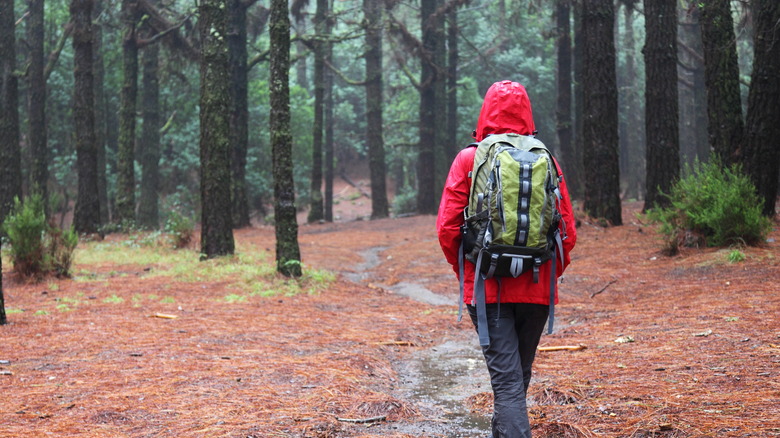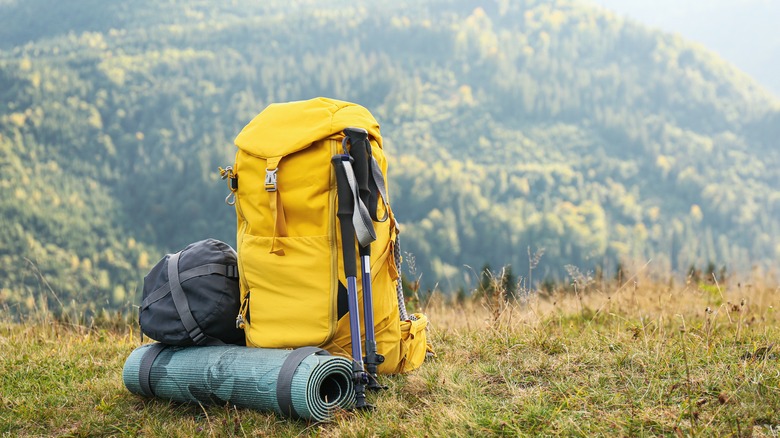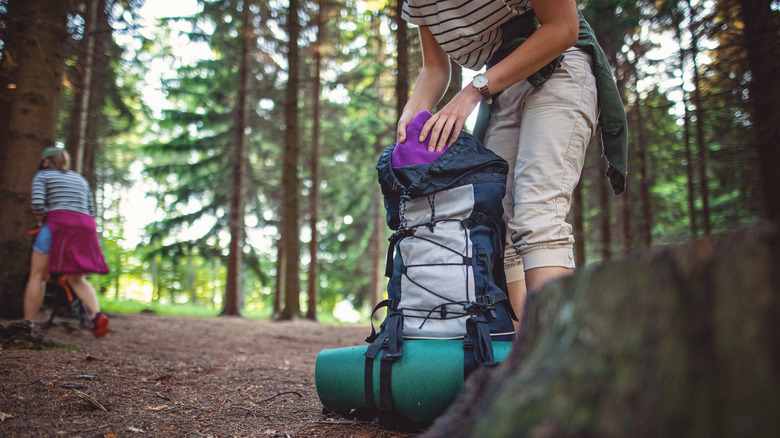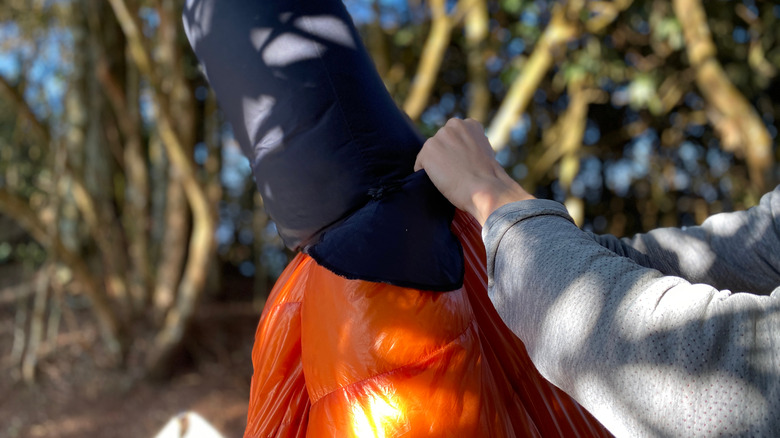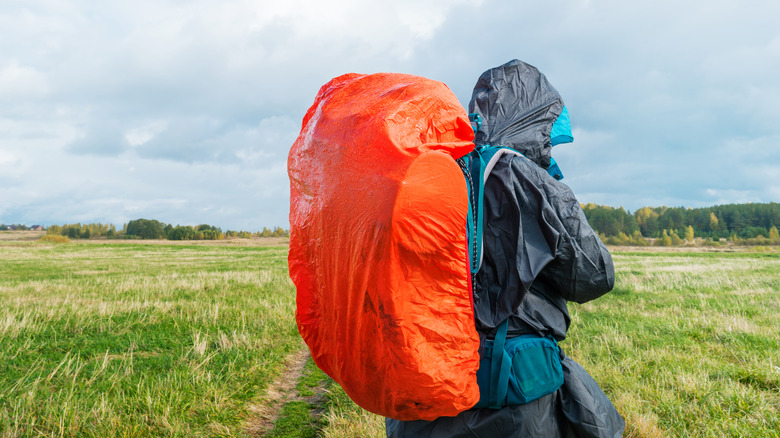The Best Ways To Waterproof Your Backpack When Hiking
There are many things to consider when planning a hike. For instance, are you hiking a long distance or alone? You also need to think about the steps you need to take to avoid ticks, poison ivy, and wild animals you might encounter along the way. Another thing to add to that list is how to waterproof your backpack. Yes, getting out into the great outdoors means fresh air and beautiful scenery, but it also means you're under the mercy of the weather. When it rains during your hike, are you prepared? Many hikers view getting drenched in the rain as a rite of passage, so they always protect their hiking gear and other valuables in their bags.
While there are many ways to keep your backpack dry, such as using garbage bags as a liner, you want to be doubly sure that no water will ever penetrate your bag's contents. Hiking gear, essential electronics, and thermal clothing might malfunction when wet and risk your health and safety. Below, we list — in no particular order — some of the best ways you can waterproof your backpack when you go outdoors to hike. All of these will work well alone or in tandem. Just remember that your choice of waterproofing solution boils down to your preference.
Waterproof backpack
If you aim to keep your gear and other hiking stuff dry, investing in a waterproof backpack might be the right choice. These hiking bags are made from polyester with a polyurethane coating. They also have welded seams and feature a roll-top closure to keep the water out not only during a downpour but also when your hike takes you through a river crossing.
When searching for a waterproof hiking backpack, there are several things you should keep in mind. First, you'll need one with enough space for your needs. A 35L or smaller bag is a good option for a day trip, a 36L to 55L backpack is suitable for a camping excursion, and over 55L will hold all you need for a multi-day outing. The bag should also be sturdy and include a chest strap and hip belt. Stay away from bags with any features that could make carrying them uncomfortable.
It's an investment because waterproof hiking bags are expensive. But the price might be worth it for you. Alternatively, you can use dry bags that are designed to be used by paddlers and kayakers.
Seam seal and waterproof spray
For a more cost-effective solution, you might want to use the waterproof spray and seam seal method. You'll need a water-resistant bag, though, as these chemicals only function as an add-on layer of protection. They only allow water to drip off your bag quickly but will not make your hiking backpack waterproof. So, it's only suitable for light rain events and nothing more.
To apply the waterproof spray, you'll need to thoroughly clean your bag at least a day before your hiking trip. Then, spray two coats of waterproofing spray and hang to dry. Once dry, use the seam sealer to cover up all the seams in the fabric. Once the seam sealer is dried, your hiking backpack is ready for use. With improved water resistance, this bag can keep water out during light to moderate rains.
You'll need to remember these application steps because the waterproof spray and seam seal method requires regular re-application. So, while this waterproofing technique is cheap, it's labor- and time-intensive and doesn't guarantee full water protection. It's best used as an extra layer or backup protection to other waterproofing tools, such as a pack cover or pack liner.
Waterproof pack liner
If you're looking for a reliable way to waterproof your hiking backpack, many hikers swear by pack liners. They're a tried-and-true method of protecting your bag from the rain. They're made from waterproof material that's lightweight but durable and come in a variety of sizes. Plus, a roll-top closure ensures water doesn't soak the things inside.
Pick a pack liner appropriate for your hiking bag, place it inside your backpack, and stash all your gear, clothing, etc. The pack liner keeps its contents dry, but the bag will still get wet. So, you might want to use this alongside a rain cover.
When you buy pack liners, opt for those made of fabric. They're more durable and can be reused for longer. Plastic bag-type pack liners aren't as strong, so avoid buying them. In addition, even when fabric pack liners get ripped or have holes, you can still extend their use through gear repair tape. Pack liners can be a bit costly, so you'll get your money's worth from the fabric ones.
Waterproof stuff sacks or dry bags
If putting everything into a single-pack liner doesn't sound good to you, or if you just crave organization even when hiking, you might want to get a set of stuff sacks or dry bags. They are most suitable for keeping a few smaller items dry. But, as stuff sacks are available in various sizes, shapes, and materials, you can arrange your things the way you prefer and sort items by category. For instance, one dry bag could hold all your electronics, while another will carry your clothing.
Because you need more than one, you'll be spending more. So, depending on how many stuff sacks you require, it could get expensive. Still, it's an excellent way to access certain items without exposing the rest to the rain. Dry bags work best with a pack liner for double water protection.
When packing your stuff sacks, remember to get any air out, or you might have difficulty putting them inside your bag. Unless your dry bags are made of breathable, waterproof material, they might swell with air like balloons.
Pack cover or rain cover
If pack liners, stuff sacks, or dry bags sound too cumbersome for you, a rain cover might be more your thing. It's made from light and compact material, so it's easy to store and quick to put on. While you need to stop to put it in place, your pack cover stretches over the entire bag, and the elastic holds it in place so your backpack doesn't get wet. However, once your rain cover is on, you might put off getting anything from your bag till later, as retrieving items means taking off the cover and exposing your bag and its contents to the rain.
You'll also need to buy a pack cover that's the right size for your hiking backpack. If you buy a rain cover smaller or bigger than your bag, you might regret it later. (Pack covers are inexpensive, so you can buy one for each hiking bag.) Rain covers are prone to sliding off or blowing away in the wind, so they're not recommended for use in a windy storm or big rainfall. One with an attachment system might lessen or eliminate these problems. But, even if you're hiking under the cover of trees, you'll still have to deal with the possibility of damage from branches and twigs.
